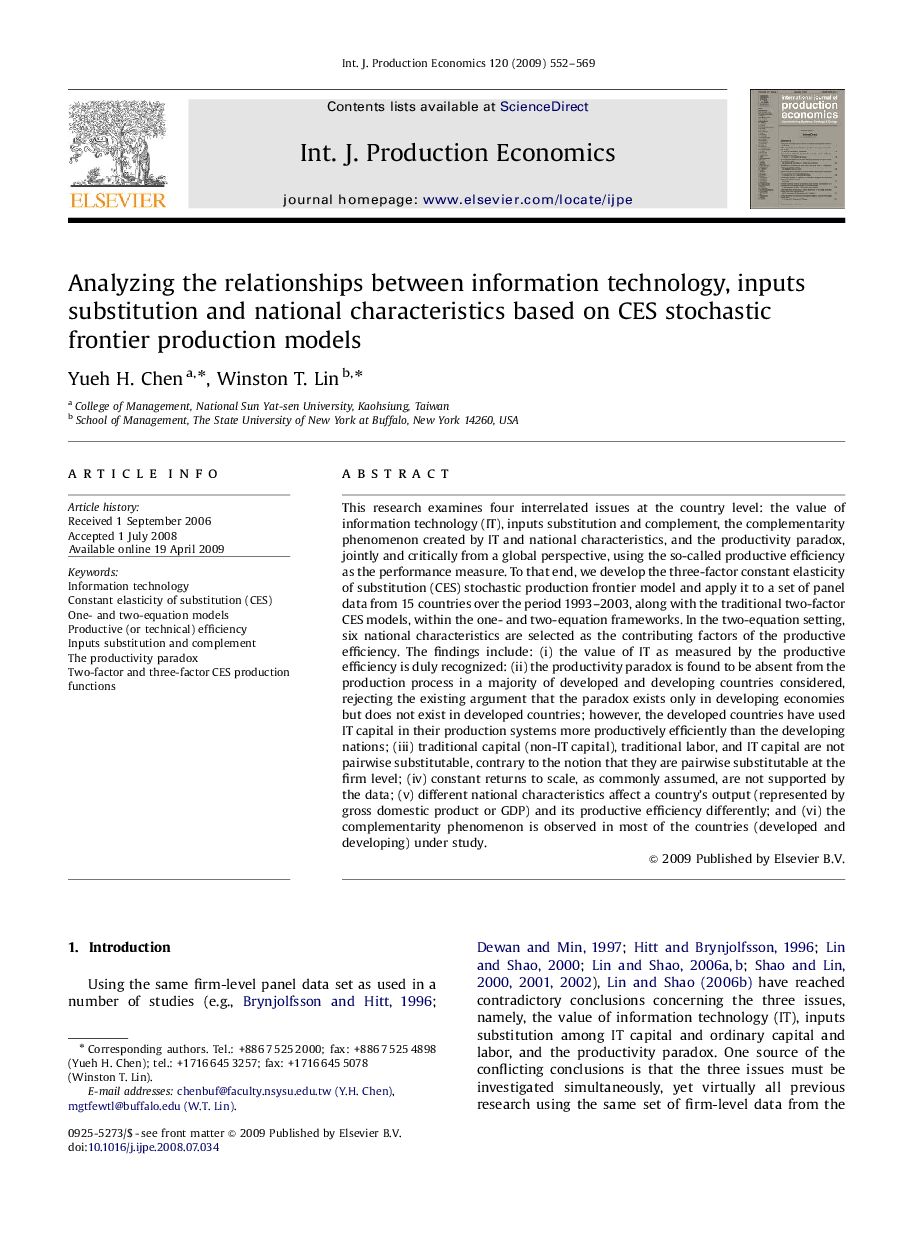| کد مقاله | کد نشریه | سال انتشار | مقاله انگلیسی | نسخه تمام متن |
|---|---|---|---|---|
| 5081901 | 1477620 | 2009 | 18 صفحه PDF | دانلود رایگان |

This research examines four interrelated issues at the country level: the value of information technology (IT), inputs substitution and complement, the complementarity phenomenon created by IT and national characteristics, and the productivity paradox, jointly and critically from a global perspective, using the so-called productive efficiency as the performance measure. To that end, we develop the three-factor constant elasticity of substitution (CES) stochastic production frontier model and apply it to a set of panel data from 15 countries over the period 1993-2003, along with the traditional two-factor CES models, within the one- and two-equation frameworks. In the two-equation setting, six national characteristics are selected as the contributing factors of the productive efficiency. The findings include: (i) the value of IT as measured by the productive efficiency is duly recognized: (ii) the productivity paradox is found to be absent from the production process in a majority of developed and developing countries considered, rejecting the existing argument that the paradox exists only in developing economies but does not exist in developed countries; however, the developed countries have used IT capital in their production systems more productively efficiently than the developing nations; (iii) traditional capital (non-IT capital), traditional labor, and IT capital are not pairwise substitutable, contrary to the notion that they are pairwise substitutable at the firm level; (iv) constant returns to scale, as commonly assumed, are not supported by the data; (v) different national characteristics affect a country's output (represented by gross domestic product or GDP) and its productive efficiency differently; and (vi) the complementarity phenomenon is observed in most of the countries (developed and developing) under study.
Journal: International Journal of Production Economics - Volume 120, Issue 2, August 2009, Pages 552-569